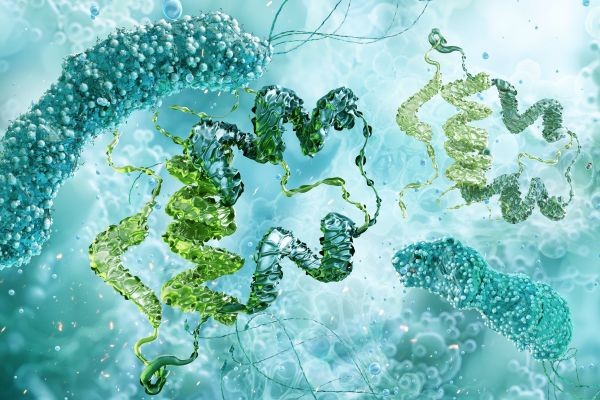In the realm of cellular signaling, few families have garnered as much attention as the Wnt proteins. These secreted lipid-modified glycoproteins govern a broad range of biological processes, from embryonic patterning to adult tissue maintenance. Through a network of highly regulated signaling pathways, the Wnt family exerts influence over cell fate determination, proliferation, migration, and polarity—functions that are essential to both organismal development and tissue regeneration.
Structural Complexity and Controlled Secretion
Wnt proteins are uniquely characterized by their dual lipid modifications, particularly palmitoleoylation, which are catalyzed by the endoplasmic reticulum-resident enzyme Porcupine (PORCN). These modifications are crucial not only for protein folding and secretion but also for receptor binding and biological activity. Once processed, Wnt ligands are escorted through the secretory pathway by Wntless (WLS), a specialized transport protein, ensuring their efficient delivery to the extracellular environment.
However, Wnt ligands are not classical diffusible morphogens. Due to their hydrophobic nature, they rely on lipid particles, cytonemes, or exosome-like vesicles for extracellular mobility. This constrained diffusion allows for spatially restricted yet highly precise signaling gradients, especially during embryogenesis.
Canonical and Alternative Pathways: Mechanistic Divergence
The Wnt signaling network is often divided into β-catenin dependent (canonical) and β-catenin independent (non-canonical) arms, though the reality is a spectrum of interrelated and sometimes overlapping mechanisms.
β-Catenin Dependent Wnt Signaling
In the canonical route, Wnt ligands such as Wnt3a or Wnt1 interact with membrane-bound Frizzled (FZD) receptors and co-receptors LRP5/6. Upon ligand binding, the β-catenin destruction complex—composed of Axin, APC, CK1, and GSK-3β—is inhibited, resulting in cytoplasmic accumulation and nuclear translocation of β-catenin. Inside the nucleus, β-catenin interacts with TCF/LEF transcription factors to modulate gene expression patterns critical for cellular identity and stemness.
This transcriptional program has far-reaching implications. In adult tissues, such as the intestinal crypts, Wnt/β-catenin signaling maintains a proliferative stem cell niche. Disruption of this balance, through mutation or epigenetic modulation, often serves as a trigger for tumorigenesis.
Non-Canonical Wnt Signaling
The β-catenin-independent branches, typically activated by ligands such as Wnt5a or Wnt11, diverge toward pathways that regulate cell movement, actin cytoskeletal dynamics, and intracellular calcium fluxes. These cascades, including the planar cell polarity (PCP) and Wnt/Ca²⁺ pathways, are vital for processes like convergent extension during gastrulation, axon guidance, and immune cell trafficking.
Unlike the canonical pathway, these alternative branches are less dependent on transcriptional output and more on immediate structural or motility responses, reflecting a broader versatility of Wnt signal output depending on the cellular context.
Physiological Functions Beyond Development
While Wnt signaling is indispensable in embryonic patterning—establishing body axes, limb development, and organogenesis—it continues to play a defining role throughout life. Adult tissues with high turnover, such as the epidermis, gastrointestinal tract, and hematopoietic system, rely on tightly regulated Wnt activity to sustain their stem and progenitor cell populations.
For instance, Wnt signaling in hair follicle stem cells drives cyclical regeneration, while in bone biology, it promotes osteoblast differentiation and bone mineral density regulation, making Wnt modulation a compelling target in osteoporosis therapy. Dysregulation, on the other hand, often skews differentiation, leading to disease states like fibrosis, hyperplasia, or malignancy.
Pathological Consequences of Wnt Dysregulation
Aberrant Wnt signaling is a hallmark of several human cancers. Constitutive activation of the canonical pathway—often through loss-of-function mutations in APC or gain-of-function mutations in CTNNB1 (β-catenin)—leads to uncontrolled cell proliferation and survival, particularly in colorectal carcinoma. In other contexts, overexpression of non-canonical Wnt ligands like Wnt5a correlates with increased invasiveness and poor prognosis in melanoma, breast, and gastric cancers.
Beyond oncology, alterations in Wnt signaling are increasingly linked to neurodegenerative diseases. Suppression of Wnt/β-catenin activity has been implicated in Alzheimer’s disease, where reduced β-catenin levels may exacerbate neuronal vulnerability. In fibrotic diseases, inappropriate Wnt activation contributes to excessive extracellular matrix deposition and organ dysfunction.
Wnt in the Lab: Tools for Functional Dissection
From a research perspective, Wnt proteins pose technical challenges due to their lipid modifications and context-dependent activity. Nonetheless, recombinant Wnt ligands—particularly Wnt3a and Wnt5a—have become valuable tools in stem cell differentiation protocols, organoid systems, and developmental assays.
Luciferase-based TOPFlash/FOPFlash reporter systems remain the gold standard for quantifying canonical Wnt activity. In parallel, gene editing technologies such as CRISPR/Cas9 enable precise knockout or knock-in of Wnt signaling components, allowing researchers to dissect pathway functions in vivo and in vitro. Small-molecule inhibitors targeting PORCN (e.g., LGK974), tankyrase (which regulates Axin), or DVL proteins provide further means of modulating Wnt output for both basic research and therapeutic screening.
Outlook: Toward Clinical Translation
Given the Wnt pathway’s centrality in stem cell biology and disease, its therapeutic potential is enormous but also complex. Clinical trials targeting Wnt signaling are underway for cancer, bone diseases, and fibrosis, yet achieving specificity remains a challenge due to the pathway’s involvement in tissue homeostasis.
Emerging approaches focus on contextual modulation rather than global inhibition—either by targeting tissue-specific receptors or modulating downstream effectors selectively expressed in diseased cells. This nuanced strategy reflects a deeper understanding of Wnt’s dual roles as both a developmental architect and a disease driver.

